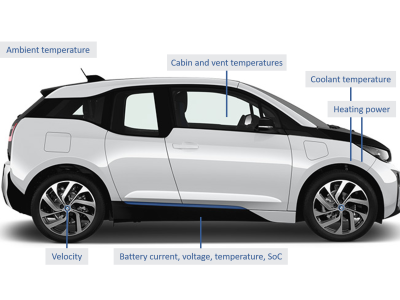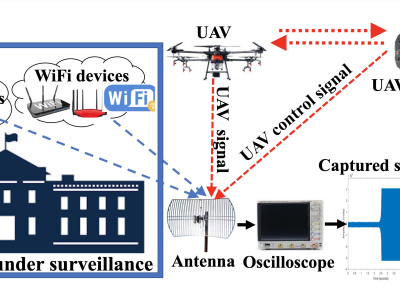Dr

- Citation Author(s):
- Submitted by:
- Christopher Holmes
- Last updated:
- DOI:
- 10.21227/5hgc-3n40
- Data Format:
 91 views
91 views
- Categories:
- Keywords:
Abstract
This work quantifies water contamination in jet fuel (Jet A-1), using silica-based Bragg gratings. The optical sensor geometry exposes the evanescent optical field of a guided mode to enable refractometery. Quantitative analysis is made in addition to the observation of spectral features consistent with emulsification of water droplets and Stokes’ settling. Measurements are observed for cooling and heating cycles between ranges of 22oC and -60oC. The maximum spectral sensitivity for water contamination was 2.4 pm/ppm-v with a resolution of < 5 ppm-v.
Instructions:
Excel file contains processed data for 'Monitoring water contamination in jet fuel using silica-based Bragg gratings'.
Tab titles refer to figures.
Figure 2 - column data is wavelength (nm), Reflected Power (dB) for TE and TM respectively
Figure 3 - contains 8 data sets listed in paper. Each column pair correspond to temperature (oC) and power respectively.
Figure 4 - Bragg grating shifts for Bragg grating 1 and 3. Two data sets for wrm up and cool down respectively
Figure 5 - Temperature and thermo-optic response is given in the first two data sets. The third data set is the temperature profile evolving over time. The fourth and fifth data set represents the raw data from which thermo-optic response is infered.
Figure 6 - Six data sets following the normalised reflected power over temperature evolution for Grating 3, 1 and 2 respectively
Figure 7 - Variaition of bandwidth with tempeature. Note second column is 3dB bandwidth in nanometers.
Figure 8 - Bragg shift in picometers as a function of water contamination, the fourth data set is obtained bycompensating sets 1 and 2 with 3.
Figure 9 - As Figure 8, but showing normalised amplitude in dB.








